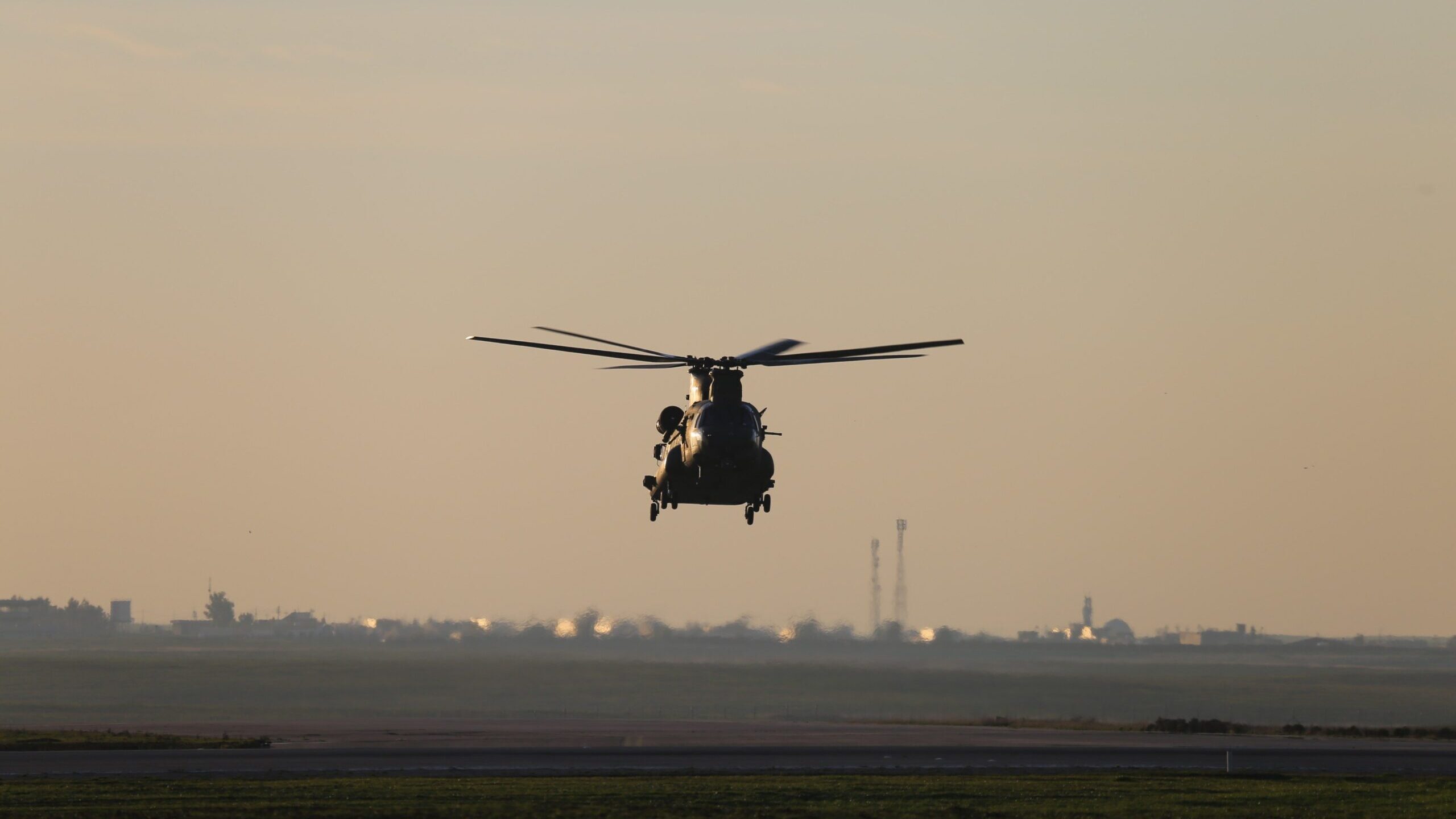
A CH-47 Chinook helicopter, operated by Soldiers with Bravo Company, 3-238th General Support Aviation Battalion, 28th Expeditionary Combat Aviation Brigade, flies over an airfield in the 28th ECAB’s area of operations in the Middle East. (U.S. Army photo by Sgt. Eric Smith)
AAAA: Boeing’s CH-47F Chinook Block 2 is moving ahead to production, but the Army is tabling plans to include the company’s Advanced Chinook Rotor Blades after issues with vibration and stalling issues in testing.
Block 2 of the program provides several upgrades in speed and cargo capacity over Block 1 of the CH-47F, but it won’t include the new rotor blades designed to give the helo a boost in lift capacity. The company received a stop work order for the blades from the Army on the contract in September, Boeing officials told reporters.
Brig. Gen. Robert Barrie, program executive officer for aviation, said that during developmental flight tests, the advanced rotors caused a vibration issue and stalling with the aft rotor that increased stress on the rotor system.
“Those two combined issues and the inability to have an affordable way through that led the Army to make the decision to stop … that portion of the development, but to continue the engineering and manufacturing development to fully qualify the remainder of those Block 2 capabilities,” Barrie told reporters during a roundtable at the Army Aviation Association of America conference in Nashville, Tenn.
The tradeoff for the Army is about 2,000 pounds less lift capacity at “high, hot” altitudes, or about 4,000 feet and 95 degrees Fahrenheit. Barrie said the Army is planning to “fully qualify” the Block 2 capabilities through fiscal 2023.
Block 2 has a 54,000 maximum gross weight, up from 50,000 on the first block, about an 8% improvement, Boeing officials said. Block 2 also allows for an 8% increase in mission radius when fully equipped and carrying 32 soldiers. The new iteration of the aircraft also improves torque by 10%, reliability of the rotor head and single fuel system that can add an additional 100 gallons of fuel, Barrie said.
With the program heading toward production, Boeing will make four Block 2 Chinooks under its current contract, with deliveries slated to start at the end of calendar year 2023, according to Heather McBryan, director of business development for H-47 and future vertical lift programs.
While the aircraft is heading into production, the Army hasn’t officially made a decision to buy it in mass, as the service and Congress have been at odds over its funding. The Army budget request for fiscal 2023 once again passed over funding Block 2 cargo helicopters, with Army acquisition chief Doug Bush telling reporters last month that “what’s funded in the budget is the SOCOM [Special Operations Command] aircraft only for Block 2.” Bush said the Army doesn’t yet need to make a decision on the CH-47F Block 2 aircraft.
“The decision on that was always planned to be calendar year 23 decision,” Bush said last month.
Despite a lack of decision by the Army, Congress continually adds funding back from Block 2 in appropriations. In its fiscal 2022 omnibus, Congress provided $170 million for the second lot of Block 2 Chinooks and “long lead time funding” to ensure the Army stays on track for Block 3. The Army awarded a $136 million contract to Boeing for four Block 2 aircraft in October and another $29 million for advanced procurement for a second lot of Block 2 variants.
“The main thing we focus on is just executing to our current contracts,” McBryan said. “So we’re closing out on the EMD flight test program and moving into production. So really focusing on, you know, meeting our commitments to the first aircraft production builds.”
Boeing, meanwhile, is modernizing some of its parts from its Block 1 aircraft to build its Block 2 aircraft. Boeing is “inducing” some Block 1 aircraft and deconstructing them, a process McBryan said takes 20 days. From there, the defense giant sends the parts to its facilities or its suppliers to be upgraded. McBryan said that the tear down of the Block 1’s going into induction will be finished in May this year, with upgraded parts returning from suppliers by April or May of next year.
“It’s going to be specific per component just based on the time it takes to recapitalize that specific component,” McBryan said. “So about a year for some of the longer lead parts that need to go through that process.”
The officials weren’t immediately able to provide a specific number for how much money the upgrade would save. McBryan noted that Boeing would salvage parts from Block 1’s drivetrain and upgrade those for Block 2.
“From a cost perspective, that’s one of the big hitters that we’re salvaging off of their existing fleet,” McBryan said.
While the Army may be reluctant to commit to the Block 2 aircraft, the special operations community and international partners are not. Army Special Operations Aviation Command has had MH-47G Block 2 Chinooks in its fleet since 2020 and has bought 36 total so far. The United Kingdom awarded Boeing a contract for 14 Block 2 Chinooks last year, its first international sale for Block II.






















